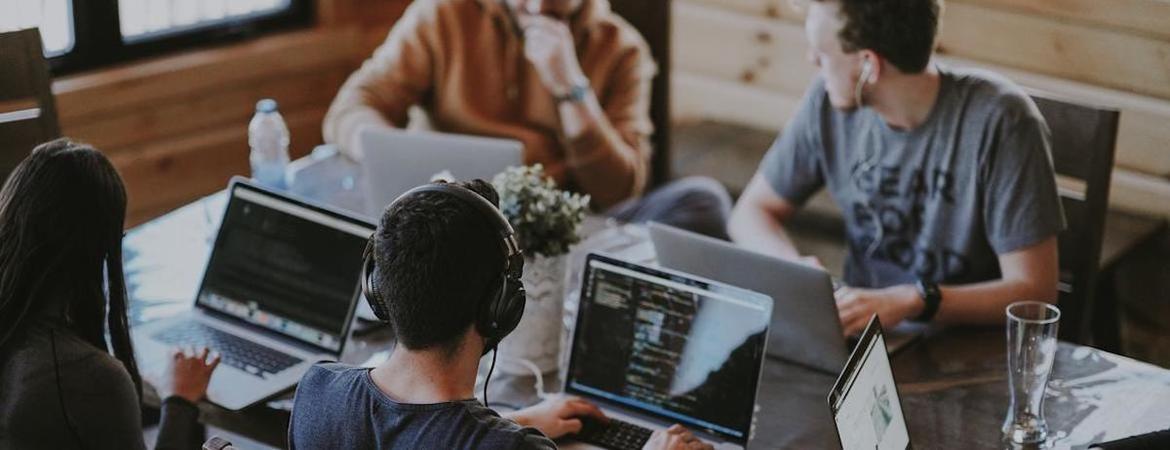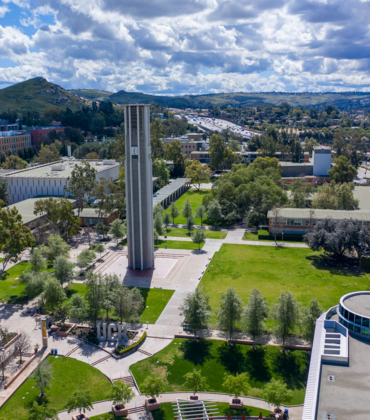
After more than a year of working remotely, some employees have concerns about returning to the office and the life that the COVID-19 pandemic abruptly changed. Indeed, as COVID vaccines become increasingly available, many are experiencing return-to-work anxiety and stress when contemplating returning to their desks. How might such anxiety be calmed and managed? Four experts at the University of California, Riverside, share their thoughts.
Kalina Michalska
assistant professor of psychology
“In the absence of the social interaction that our brain expects, increased isolation and loneliness can lead to increased risk for cognitive decline.”
— Michalska
Q: How may the brain have changed in more than a year of social isolation/working from home? How may the changes impact returning to work post COVID?
A: Humans are inherently a social species and changes in people’s interactions with those around them influence their neurobiology. We know from epidemiological work that the size and strength of people’s social networks are associated with enhanced cognitive function like working memory and emotion processing. Specifically, greater social interaction correlates with increased volume in the amygdala, a brain region that encodes salient information in the environment and the hippocampus, a region important for learning and memory, as well as greater cortical thickness in prefrontal cortex, a region important in decision making and social behavior. Together, this distributed network of brain regions enables us to learn about and recognize emotional cues in others in order to more effectively navigate our social world.
The flip side is that in the absence of the social interaction that our brain expects, increased isolation and loneliness can lead to increased risk for cognitive decline, as well as mental health consequences like depression, often disproportionately so in vulnerable members of the population, such as children, the elderly and those with underlying mental health concerns.
What this means for returning to work is that we may have become more used to interacting with fewer people and turning inwards so that a return to meetings, classes, and in-person social events can be overwhelming initially and lead to greater anxiety, particularly as we have not been fully exercising our social skills for over a year. As we take this next step, it is important to be kind to ourselves and to remember that others may be facing similar challenges. We should view this as an opportunity to be more empathic and compassionate as we collectively struggle to physically re-enter social life.
Jan Stets
professor of sociology
“Fear can become anxiety if coping mechanisms fail and the fear remains unresolved.”
— Stets
Q: Why do you think people are feeling anxiety about returning to in-person workplaces?
A: Fear is an emotion in response to an impending threat that motivates a reaction to protect the self: flee or withdraw. The negative emotion usually subsides upon termination of the threatening stimulus, which is expected to cause one harm.
Anxiety is an emotion about a distant, potentially negative outcome that is uncertain and unpredictable. It is longer-lasting than fear, more future-oriented than present-oriented fear, and is less likely to have a specific elicitor or terminator. Functionally, one attempts to confront the threat rather than withdraw or flee. One attempts to gather information and consider possible actions. One strategy is to engage in repetitive visual scanning of one's environment for potential threats.
Fear can become anxiety if coping mechanisms fail and the fear remains unresolved. However, fear is not a necessary antecedent to anxiety. Other things like rumination can produce anxiety.
People are coming out of a pandemic in which the pathogen not only has produced an illness, but it has killed many. Its replication and variants are still unknown. Safety for themselves and loved ones is still not guaranteed right now. That, coupled with the fact that not everyone has agreed to get vaccinated means that herd immunity may not be achieved anytime soon, increasing the uncertain and unpredictable nature of the effect that the virus will have on individuals’ lives. So, this is an aspect that people have to deal with and that contributes to their anxiety.
Other aspects of the anxiety are layered on top of the health and safety issue. What will my job look like when I return? Will it be more distance-oriented? Do I have the tools and skills to accommodate to new ways of doing my job should they emerge? If I return to my job, is it secure so that I can continue to financially provide for myself and my family or is my organization on the brink of dissolving? Can my family members take care of themselves should I return to in-person work?
Finally, there are likely personal issues that have emerged over the past year that individuals likely are wrestling with as they return to their place of work. Is this what I want to continue doing? Do I want a different career? Am I really happy with my current circumstances? Dealing with these issues also can generate anxiety because if a different path is contemplated, uncertainty is heightened with what the journey looks like.
Kate Sweeny
professor of psychology
Teresa and Byron Pollitt Endowed Term Chair
“You can look for the good in returning to work to boost hope and optimism and quiet worry and anxiety.”
— Sweeny
Q: What are some tips for overcoming anxiety as it relates to returning to work post COVID?
A: So much has changed since March 2020. For many of us, one change has involved learning to work from home rather than going to an office every day. Although this change may have been quite stressful initially, the long duration of the pandemic has allowed people to adapt to their new normal, to become comfortable — or relatively so, at least — being at home most of the time. Perhaps unsurprisingly, then, many people are feeling anxious as they look ahead to a time when they have to return to the office, returning to once-comfortable but now unfamiliar routines.
My research on the psychology of stressful uncertainty reveals several ways of managing these anxieties. First, it helps to plan ahead to gain a sense of control over the uncertain future — perhaps by revisiting your work wardrobe, dusting off your daily planner, or looking up some new recipes for lunch-on-the-go. Second, you can look for the good in returning to work to boost hope and optimism and quiet worry and anxiety. Are there coworkers you’ve missed? Old routines that will be a welcome relief? Finally, if all else fails, you can find challenging, engaging activities to absorb your attention — a process called “flow” — and help pass the time pleasantly while you wait for the “old normal” to return.
Amanda Smith
director of Medical Student Support & Wellness
“Remember that a sense of adjustment will take time just as it did with the initial experience of quarantine.”
— Smith
Q: What may be some reasons for the return-to-school anxiety among students and how might the students address this anxiety?
A: Anxiety is fear of the future and the unknown. It is often a feeling of worry and nervousness about events and outcomes that feel uncertain. We have been living through very uncertain times; therefore, it is completely normal to feel anxious about yet another change: returning to campus. Many are beginning to feel anticipatory anxiety, which arises when we begin to think about what “may” or “could” happen and is usually tied to the most negative outcome we can think of. Remember that a sense of adjustment will take time just as it did with the initial experience of quarantine. Remember that people will need to adjust according to their own needs. When feelings of anxiety begin to arise, consider:
- Acknowledging that you are experiencing a moment of anxiety and sit with it. Practice a few moments of focused breathing and not attaching to the story of the thought. This can reduce the time in which the feeling of anxiety is experienced.
- Planning and developing what habits you would like to maintain as you transition back to campus — for example, quiet morning routines, walks, and exercise. Consider what has benefited your overall wellbeing and make these non-negotiable.
- Accepting that things will look different. Gaining support — friends, family, therapy — can be vital to adjustment.
Remember to take it one step at a time. Having boundaries and awareness of what can help you “ease back in” is an excellent place to start. Remember also that all thoughts are not facts.
(Header photo by Annie Spratt on Unsplash.)







